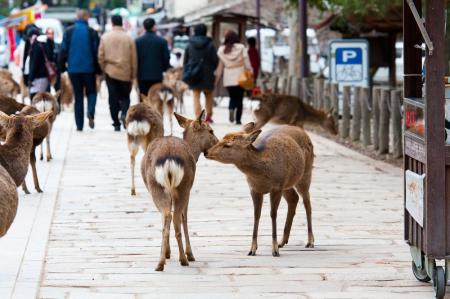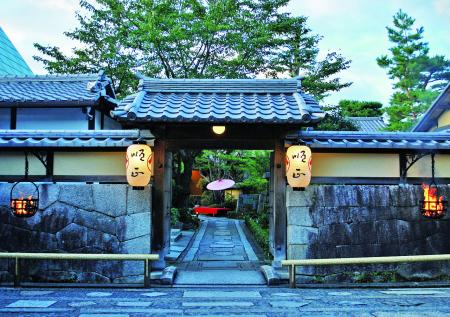Nara, Japan Feb. 22 Sat 3:58PM
Great Eastern Temple
This structure is one of Japan’s most famous due to its construction as the head temple of all provincial Buddhist temples in Japan in 752. The temple is acknowledged as a UNESCO World Heritage Site for being one of the “Historic Monuments of Ancient Nara.”
Daibutsuden (Big Buddha Hall)
This is the world’s largest wooden building. Walk in and you will see one a 15 foot bronze Buddha – the world’s largest bronze Buddha statue. Also in this building is a large pillar with a small hole at the base. The belief is that those who can fit inside the hole will be granted enlightenment in their next life.
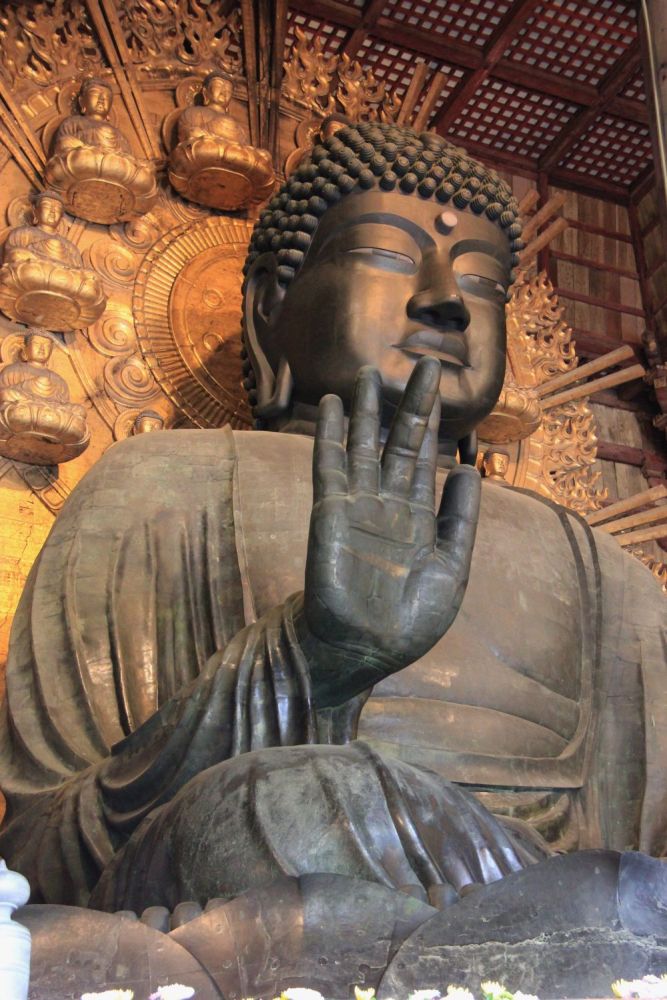
Nandaimon Gate
This wooden gate is guarded by two national treasures- statues that represent the Nio Guardian Kings. The nearby Nara Park is known for its small deer and other friendly animals. These deer often wander around the Nandaimon Gate. There are stands nearby selling deer crackers for visitors to feed to the deer! These deer are commonly thought by followers of the Shinto religion to be messengers of the gods.
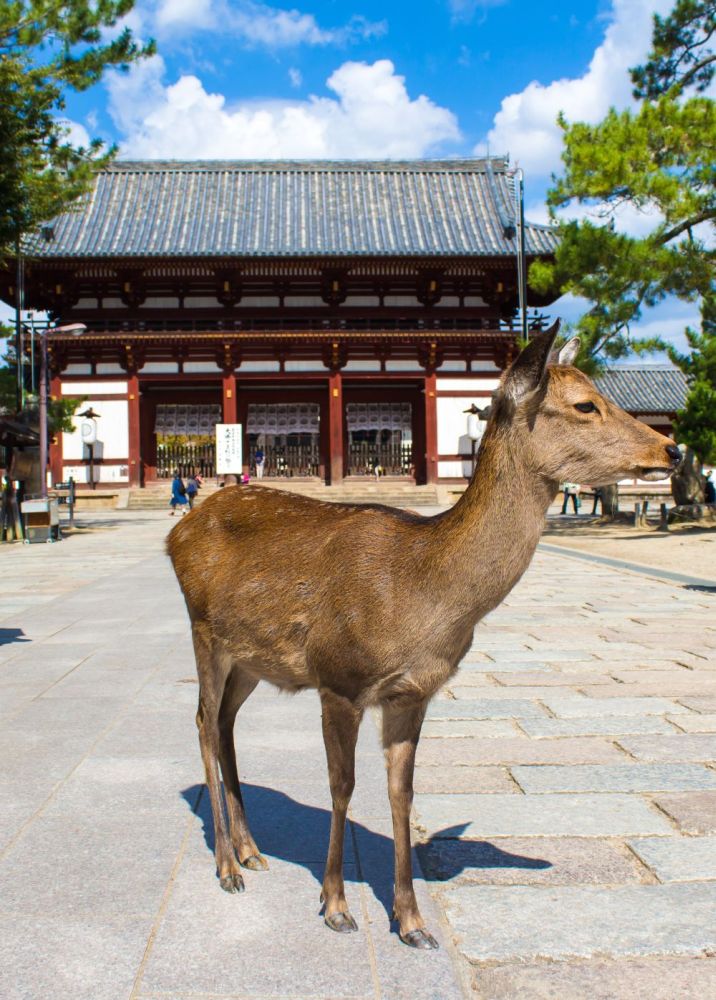
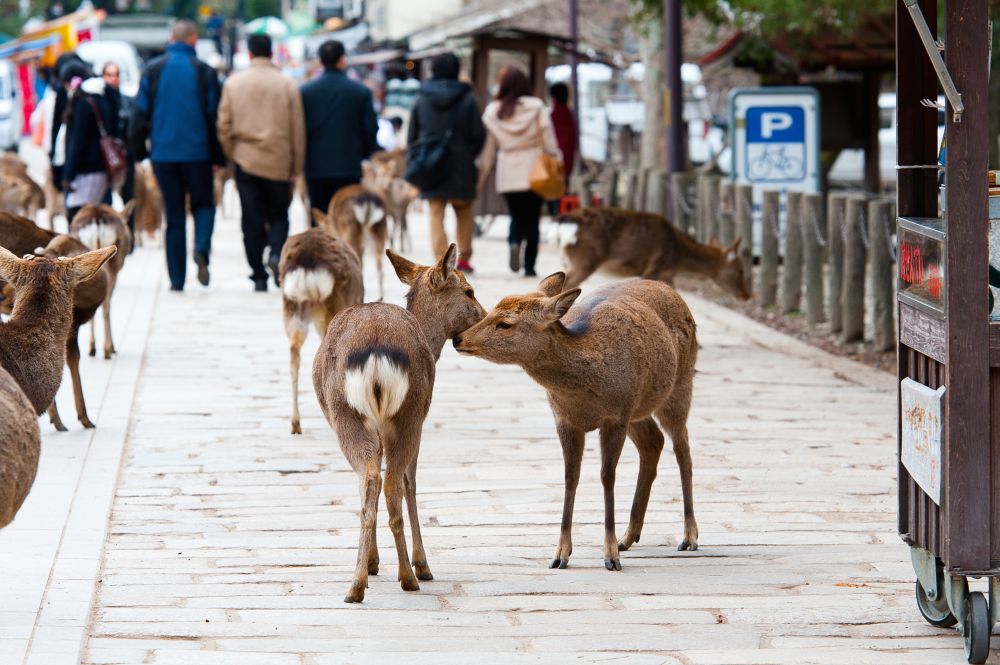 Todaiji Museum
Todaiji Museum
The museum of Todaiji exhibits change constantly – always displaying various religious or cultural art or artifacts.
Nigatsudo Hall
The Nigatsudo Hall has a high up balcony from which you can experience a beautiful view of the city. The main floor also holds Omizutori ceremonies from March 1 to 14. Nigatsudo translates to “second month,” signifying the second month of the lunar calendar during which the Omizutori ceremonies take place. Omizutori are one of the oldest Japanese Buddhist traditions, and consist of a series of Buddhist repentance performances.
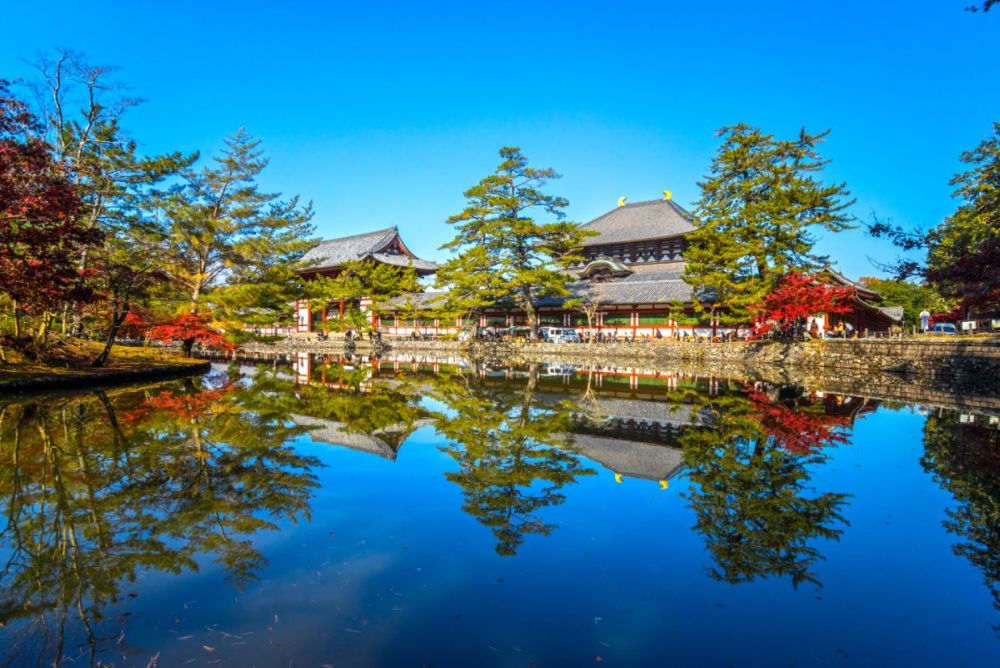
Otaimatsu is one of the most impressiveparts of the Omizutori ceremony. Giant torches are carried up to the balcony of the Hall and then usually carried across the balcony one at a time. The embers that spray outward from the flame fall down upon the audience below. Those touched by the embers are thought to be blessed with a safe year.
Omizutori translates to the taking of water. Another part of the ceremony is when torch-holding priests make their way down to draw water with restorative powers from a well near the Hall. Apparently this water flows only once a year.
After the omizutori takes place, the Dattan ceremony is performed. This loud instrument-heavy ceremony consists of priests swinging lit torches around the inside of the Hall.

